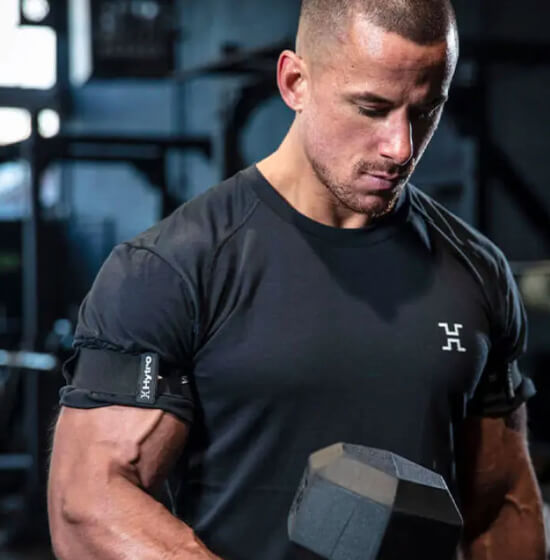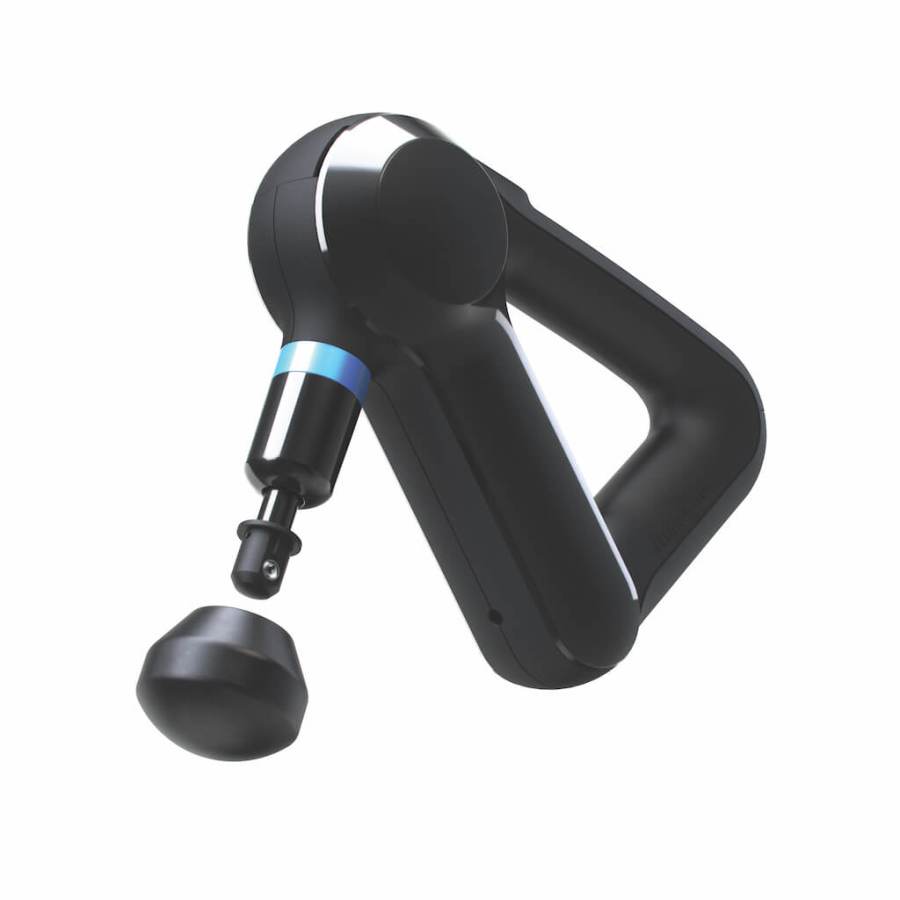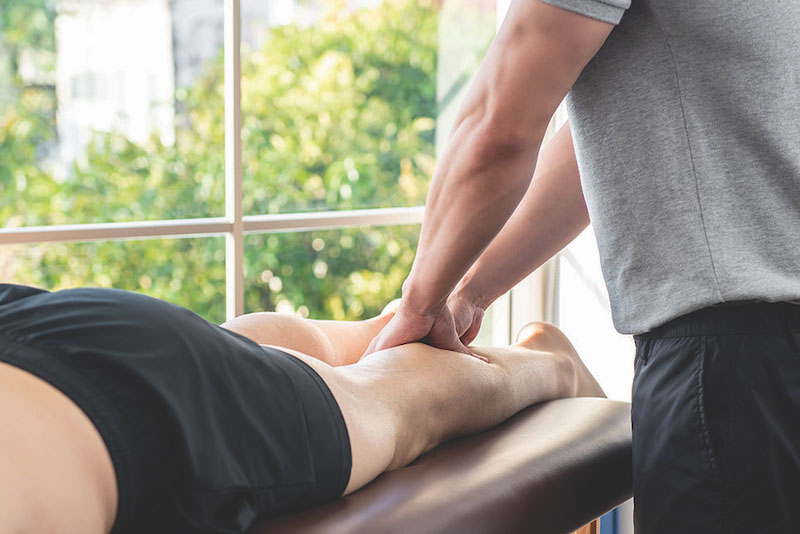Products You May Like
Preparing meticulously and emptying the tank in your workouts is all well good, but are you forgetting the most important part of the fitness puzzle?
By that we mean, doing very little.
Rest and recovery are the most crucial aspects of any exercise programme. Without recovery, your body cannot heal, rebuild muscle and get stronger ahead of the next training load.
You might be good at putting your body through stress, risking injury, inflicting micro-tears on your muscles and diminishing your energy stores. But when it comes to getting really good nutrition in, plus a good night’s sleep?
For most of us, not so much.
Laziness plays a part, but mostly it’s because figuring out the best methods can be a minefield – one littered with brightly coloured adverts promising miracle cures.
But while research into many recovery gadgets, strategies and techniques is still in its infancy, there is still much that sports science can tell us about what can help the process…
How to speed up post-workout recovery
Stay warm
Sport and exercise physiologist Eddie Fletcher has worked with top athletes across many disciplines, and his number-one tip for recovery is to make sure you start and finish the right way.
“The warm-up and cool-down are really important parts of the session, which can help with both the quality of performance and recovery.
“Warming up and cooling down on a Wattbike is a good discipline, and the Wattbike Hub App has routines based on solid science.”
Cool-down after lifting
After finishing a heavy lifting session, don’t just head straight to the showers. Cool down with a light bit of cardio instead – nothing strenuous, but enough to get your blood flowing.
“A proper cool-down can help prevent ‘blood pooling’,” says Sundried ambassador Alex Parren, an experienced trainer, coach and nutritionist with a background in powerlifting and Olympic lifting.
“Thankfully, that is nowhere near as gruesome as it sounds. ‘Blood pooling’ is just another term for chronic venous insufficiency (CVI). That occurs after strenuous leg workouts when blood vessels expand, making it harder for the blood to return to the heart.
“By cooling down gradually and thoroughly, you will be less likely to feel light-headed after your workout, and it will prevent blood pooling in your legs.”
Feed your muscles with protein
Your muscles and body tissue depend on protein and the amino acids it contains to stay strong and durable. Without sufficient protein, the body will break down under the demands of training.
Individual needs depend on a range of factors, but for anyone who works out regularly, a high protein intake of 1.5g to 2.2g per kg of bodyweight is recommended.
Aim for 20-30g every three to four hours to maintain muscle protein synthesis (the process by which the body uses protein to repair damaged muscles caused by intense exercise).
If you’re maintaining a calorie deficit to lose weight, that muscle protein synthesis (MPS) is especially important, because your body is going to be searching for fuel and, unless you’re taking on enough protein to trigger MPS, muscle protein breakdown will occur.
How you get your protein – be it from plant or animal sources – doesn’t really matter, so long as you’re utilising combinations that provide complete proteins with all nine essential amino acids.
Animal sources are rich in these amino acids – the so-called ‘building blocks’ of muscle – but many plant sources are incomplete proteins when taken on their own.
However, emerging research suggests getting complete protein sources in one go isn’t as important as once thought. So long as your diet is varied – and you’re getting regular doses of those aminos – you should be fine.

Blood-flow restriction training can flush out waste products from your muscles, improving recovery and providing a serious pump to boot | Image: Hytro
Try blood-flow restriction training
Jordan Milsom has worked as a performance expert for elite football teams Aston Villa and Rangers.
“One of the secret weapons to elite athlete recovery is BFR,” he says, “which will undoubtedly become more frequently used in amateur and mainstream fitness in 2023. In my time at Aston Villa and Rangers, we would regularly utilise Hytro BFR to accelerate players back to homeostasis as quickly as possible.
“BFR training is the process of partially restricting arterial flow into the muscle while preventing venous return. This de-oxygenates the blood within the muscle and creates an environment which results in increased stress and fatigues quicker. These stresses are what result in increases in size and strength.
“BFR can be used for resistance and aerobic training, but more recently the emergence of using passive BFR to accelerate recovery has been demonstrated. New research has shown ischemic pre and post conditioning (passive BFR) can speed up the recovery process and get people feeling normal quicker. This passive BFR involves applying near maximal occlusion for 3-4 minutes, one to three times. We used Hytro garments for this due to the ease of use – they really are a game changer for that players buy into.”
Eat a balanced diet
Bars and shakes can be useful, but nothing beats a good diet.
“Eating for recovery and ensuring quality food intake can help with reaching the correct micro-nutrient intake – in particular an intake of eight portions of fruit and vegetables per day,” says physiologist Eddie Fletcher.
“Try, too, to eat oily fish at least twice a week, or take omega-3 supplements.”
Oily fish is doubly beneficial, because it contains heart-healthy omega-3 fatty acids (not to mention protein), which aid your body’s ability to control inflammation.
Good fats also help with the absorption of vitamins A,K,D and E, all of which support recovery, boost energy and protect your immune system.
Foam roll more
You can’t walk through a gym or scroll through Instagram these days without tripping over a foam roller. But do they really work? A big meta-analysis in 2019 of all the evidence suggests that the answer is a helpful ‘yes and no’.
On the one hand, the actual measurable effects on performance and recovery are minor, but on the other, a small improvement is not nothing.
Then there’s the psychological aspect, which can be just as important.
If you feel less pain after using one, then crack on. If there’s one thing all the studies so far agree on, it’s that there is absolutely no negative side: it’s cheap and convenient, and it can’t hurt (much).
Use a massage gun
Theraguns and other similar gadgets are now a staple of any self-respecting pro athlete’s recovery kit. And proponents say that percussive therapy – using both vibration and pressure – is more effective than simple self-massage.
The science seems to back this up, at least so far: the first major study in 2014 found that vibration massage led to less muscle soreness and an increased range of motion.
Dr Jason Wersland founded Therabody after being involved in a serious motorcycle accident and suffering intense back pain.
Everyone, he says, can benefit from using one, but he’s also realistic: “I always encourage people to think about their body holistically as well. It’s important to move your body, prioritise ergonomics, eat right and always stretch.”
If you do invest in a Theragun, it’s worth following the accompanying app and routines to get the most out of it.
Get your steps up
“When it comes to recovery, walking probably isn’t the first thing that comes to mind, but it’s a brilliant form of active recovery following just about any session,” insists Milsom.
“By bringing walking into your recovery routine with a 20-30 minute stroll on the same day, you’ll be clearing waste and reducing inflammation by having steady blood flow. It will also bring added benefits of reducing DOMs and muscle stiffness by keeping your limbs active.
“Finally, for all those trying to fit training into a busy schedule, going for regular walks will reduce stress and support with reducing anxieties that can slow down recovery.”
Drink plenty of water
There’s a reason humans can go weeks without food, but only a few days without water.
Every single cell in your body depends on good hydration to function effectively, and research out of the California University of Pennsylvania has shown that even a one per cent decline in fluids (per cent of bodyweight) can negatively impair performance.
Any intense exercise leads to minor muscle tears, and to build them up stronger again the body needs to synthesise protein.
To do that, your cells need water. H2O also helps to remove the metabolic waste a hard workout produces, and studies have shown dehydration can actually increase DOMs – so not drinking enough is a literal pain.
Research in the journal Nutrition advises drinking 200ml to 285ml of water for every ten to 20 minutes of moderate exercise. If it’s a particularly tough session, or the mercury has risen, you will need more (plus electrolytes).
Utilise compression gear
A 2020 review of evidence found that wearing compression garments did improve recovery time post-exercise.
Professional triathlete Kimberley Morrison is a firm believer: “The most common form of compression comes in compression socks, which offer graduated pressure in the lower limb to improve venous return.
“I use CEP’s socks, as the pressure that is exerted on certain muscle groups helps to reduce the diameter of major veins and therefore increases blood flow.
“And I always put them on as soon as possible after a workout, to maximise the benefits.”
Take a cold shower
Wellness trends may come and go, but cold-water therapy is a constant. The Romans plunged into frigidariums after their hot-water bathing; in 1702,
John Locke wrote of ‘miracles done by cold baths on decay’d and weak constitutions’; and the Victorians flocked to spa towns to douse themselves in icy showers.
Yet despite millenia of use, there’s still much to learn – not least the perfect temperature and duration of the exposure. Generally, around 11 degrees and for about 11 to 15 minutes seems to be the recommended dose.
Cryotherapy – at much lower temperatures, but for a shorter time – doesn’t seem to offer much extra benefit, beyond being more time-efficient.
Do more HIIT
It might sound counter-productive for recovery, but not doing enough high-intensity strength work could dampen your body’s regenerative powers.
Athletes who do endurance sports – especially as they get older – will usually see a drop in testosterone and human growth hormone levels. That means you can’t train as hard, or recover as well.
Studies show that the relationship between workload and hormone release is linear: more reps and more sets equals higher levels. By contrast, heavy weights, low reps and long recovery doesn’t seem to elicit the same hormone response.
Know your nutrients
Magnesium is crucial for virtually every process in the human body, from heart to brain to muscles, and it plays a vital role in energy production.
So a deficiency – and some estimates suggest 50 per cent of adults are deficient – can hamper recovery, and cause fatigue and muscles cramps. There’s also evidence that very physically active people need higher levels.
As with any nutrient, getting magnesium through your diet is preferable to supplementation – leafy greens, nuts, seeds and whole grains are all good sources. That said, a quality supplement can be used to help top up levels.
“I also recommend Epsom bath salts,” says Eddie Fletcher. “One of the ways magnesium is best absorbed is through the skin, so a bath is ideal. It can also promote sleep, which in turn benefits recovery.”
Another essential micronutrient for anyone who exercises regularly, zinc bolsters the immune system and can speed up recovery between workouts.
However, zinc is a mineral lost through sweat, which means athletes in high-intensity sports need to up their intake.
Research by the University of Otago found that athletes have lower levels of zinc than non-athletes, so the scientists recommended a low-dose zinc supplement in addition to a balanced diet.
Sleep it off
Unless you get a good night’s sleep, you will never achieve the muscle growth you crave.
“Peak human growth hormone (HGH) release is achieved during deep sleep,” says Parren, “which means you need to make sure you’re not waking up often throughout the night or being disturbed by noises and light.”
Jordan Milsom adds: “If you’re training at intense levels or you’ve recently started training for a new goal, you’ll need to make sure you are recovering correctly. Not only to maintain energy levels, but boost hormone development, muscle function and cognition. It doesn’t matter if you are playing in the Premier League or doing a 5k, having enough good sleep will boost performance.
“While there are lots of innovative strategies and new technologies available, don’t forget the basics of getting a good night’s rest, by making sure your bed time and morning wake-up times are consistent, and having a room that is at the right temperature. It’s also important to understand how things like mealtimes and alcohol can affect your rest.”
Take a nap
Nothing is as important as quality sleep at night, but a nap can be hugely beneficial, restore alertness and even enhance performance.
The rules are: short and sweet, and not too late. A quick power nap of ten to 20 minutes in the middle of the day doesn’t just make you feel fresher, it helps you recover, too.
During sleep, hormones such as testosterone and growth hormones are released, which help repair those muscles.
One study showed that men who got seven or more hours of sleep each night had greater hand-grip strength than those who got less than six hours.
And if there’s one thing worth investing in, it’s a really good mattress and bedding.
Try tart cherry juice
It can be hard to separate the facts from the wild marketing claims, but there is some good evidence that certain superfoods really can aid recovery.
Studies in athletes found that tart cherry juice reduced inflammation and DOMS after both endurance and strength-based exercise – and even led to improvements in sleep.
There’s no definitive answer yet as to why, but it’s thought to be because the sour cherries are packed with anthocyanins, which have antioxidant and anti-inflammatory properties.
Get a sports massage
Sports massages feel good, but do they really do anything? Professor Tim Chico and Dr Holly Davis at Sheffield University published a paper in the BMJ last year, looking at the evidence.
“A key finding is how hard it is to judge the effects of sports massage on things that can be measured directly,” explains Professor Chico.
“We found no clear evidence of a positive effect on measures of sports performance, such as strength or jump height. And although massage did improve flexibility and muscle soreness, that didn’t translate into better performance (though that doesn’t rule it out in some sports).
“But massage is undeniably pleasant – if sometimes uncomfortably so – and as long as people don’t assume it will definitely improve their race times, then it’s up to them how they spend their money.
“Do you feel better after a massage, and if so is the benefit worth the cost? If yes, then it’s worthwhile.”
Stretch more
Stretching is a bit like homework: there’s a nagging feeling you should do it, but it’s easy to make excuses. And does it really do anything?
“If you’re going through intense training sessions,” says Milsom, “maintaining mobility is crucial for being able to prepare the body for the next session quicker. You wouldn’t be much good if you had to wait three days for the DOMs to disappear, because you didn’t warm-up and cool-down properly.
“My top tip is to make sure you factor in time for stretching and mobility work, so you’re not rushing out the gym as soon as you’re finished. Give yourself 10 or 15 minutes to really get a full-body stretch. It’s also important that you’re doing a variety of movements and exercises in your sessions to reduce the risk of injury or overtraining on certain muscle groups. Exercise is your stimulus, recovery is your adaptation.”
Let off steam
Saunas are no longer the reserve of gyms and hotels. The MiHigh home infrared sauna blanket can be used on your own bed, and the benefits are pretty persuasive.
Saunas reduce stress, can improve your sleep, lower your blood pressure and – most importantly for recovery – a small study has shown they also decrease muscle soreness and enhance recovery from strength training sessions.
The MiHigh is essentially a giant sleeping bag of warmth, with a waterproof liner that stops your sweat soaking through.
You climb in, fully clothed, and turn it on – then relax and let the aching muscles unwind.
The sensation takes a while to get used to, but it does get the sweat flowing.
RELATED CONTENT:
- 8 of the best protein bars for muscle recovery
- 5 of the best massage guns
- How to create an exercise routine you will stick to


